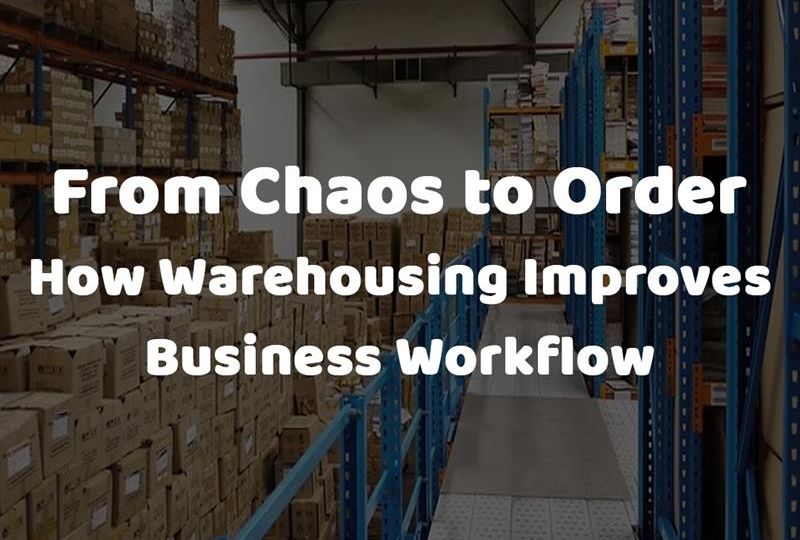
Speed and efficiency are part and parcel of today’s modern businesses. Maintaining an organized and efficient supply chain is crucial for industries dealing with physical products. Every day, companies face relentless demands to satisfy increasingly impatient customers. In the rush of producing and delivering, many overlook warehousing in Singapore, one of the most critical aspects of their operation. This unappreciated component can propel a business forward or drag it down into inefficiency. It seems like a simple process of storing goods, but it has a far more profound role in making a business profitable.
Only having a warehouse is not enough. Keeping it organized is what paves the way to success. Unorganized inventory leads to inefficiencies that waste time, increase costs, and reduce customer satisfaction. Without a clear and effective organizational system, inventory becomes a source of disorder and negatively impacts every workflow aspect. In this blog, we’ll explore how warehousing helps businesses move from chaos to order and why optimizing this aspect of your supply chain is crucial for growth and success.
The Role of Warehousing in Business Workflow
Defining the role and understanding how it improves business workflows is essential. Fundamentally, warehouses hold goods and products until they are required. However, they do much more than hold inventory. They are the central hub for receiving, storing, processing, and dispatching products to customers or retail locations.
When managed effectively, it enhances efficiency across multiple departments of the business. Here’s how:
- Inventory Management: Organizing a warehouse makes finding and retrieving products easier. Effective inventory management allows businesses to avoid stockouts, minimize overstocking, and monitor inventory levels in real-time.
- Order Fulfillment: Customers will be more satisfied with faster and more accurate product selection, packing, and shipping. Efficient warehousing directly affects delivery speed and accuracy, which are critical to maintaining customer loyalty.
- Supply Chain Integration: It is crucial in bridging the gap between manufacturers, suppliers, and customers. It helps synchronize the flow of goods from one point to another, ensuring the supply chain runs smoothly.
How Does It Reduce Chaos?
Chaos can arise from disorganization, delays, or errors in the movement of goods. Without a sound storage system, businesses can run into many problems. Companies may lose or misplace items, delay orders, and increase overall costs. An unorganized environment complicates finding the right products, resulting in extended wait times for customers. It leads to frustration and more mistakes. In short, a messy storage house can create headaches affecting everything from customer satisfaction to the company’s bottom line.
Here’s how it helps to eliminate chaos:
Centralized Organization
One key way it improves workflow is by centralizing everything. Instead of having products scattered across different locations or departments, a warehouse gathers everything in one or a few central spots. It means employees know exactly where to find products, eliminating unnecessary movement.
You need to set up clear areas for different types of products. By doing this, businesses can ensure that items are stored in logical and easy-to-access locations. It minimizes confusion and helps prevent mistakes, such as sending the wrong product to a customer or overstocking a particular item.
Inventory Control and Tracking
A lack of inventory control can lead to chaos. Without accurate records of what’s on hand, businesses may overstock some items while running out of others. This can affect customer satisfaction, resulting in lost sales or unnecessary storage costs.
Modern warehouse management systems (WMS) can solve this problem by providing real-time tracking and automated inventory management. These systems track product levels, monitor the movement of goods, and automatically update inventory records. It gives businesses a clear picture of what they have in stock at any given time, making it easier to forecast demand and avoid overstocking or running out of products.
Technologies like barcode scanning and RFID systems enable employees to quickly and accurately track products entering and exiting the warehouse.
Reduced Lead Times
Lead time refers to the time it takes to process and fulfill an order. Lead times can become unnecessarily long without an effective system due to mismanagement, disorganization, or delays in retrieving items.
Warehousing shortens lead times by arranging storage and allowing quicker order pickup. For example, businesses can reduce preparing time by placing the most commonly ordered items in easy-to-reach spots. Adding automation and robots to the process can speed things up even more, making the whole process faster and ensuring quicker delivery times.
Best Practices for Improving Warehouse Efficiency
Businesses should consider implementing the following best practices to make the most of it:
- A well-organized warehouse layout can significantly improve efficiency. Products should be stored according to size, demand, and sale frequency.
- Technology, including robotics, conveyors, and automated picking systems, can significantly improve the speed and accuracy of operations. Automation reduces the reliance on manual labor and helps streamline workflows.
- Implementing a real-time tracking system, such as barcode scanning or RFID, allows businesses to monitor inventory and shipments in real-time. This visibility ensures that products are accurately tracked.
- Businesses can improve performance and reduce errors by providing ongoing training to employees on warehouse systems, safety protocols, and best practices.
The Impact of Choosing a Well-Run Warehouse!
Choosing the exemplary service can have a transformative impact on your business. A well-run warehouse doesn’t just store products; it plays a critical role in the smooth functioning of the entire supply chain. It can reduce chaos, eliminate confusion, and ensure that the right products are always available when needed. With clearly defined storage zones, optimal organization, and a focus on inventory accuracy, a well-managed storage house creates an environment where employees can work more efficiently and customers receive their orders quickly and accurately. It translates to higher customer satisfaction, increased loyalty, and a better reputation for your business.
Faith Logistics is one of the best choices if you’re looking for reliable, efficient, and well-organized warehouse storage Singapore. With years of industry experience and advanced system experience, we offer top-notch services that can enhance your business operations. We guarantee the secure storage, effective management, and prompt delivery of your products. Contact Faith Logistics as your trusted partner in warehousing and convert the chaos into order!

